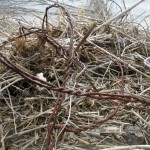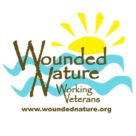 Throughout most of the year we do NOT need volunteers to assist us. We are removing large debris items and abandoned boats. In most cases we have very limited space on the boat or boats being used. And for insurance reasons we cannot have anyone near the large pieces of equipment and barges being used since it is a dangerous situation. But the biggest reason is that there is nothing for volunteers to do during boat and large debris removals. However, there are times and many ways you can assist in helping us clean up South Carolina’s coastal areas.
Throughout most of the year we do NOT need volunteers to assist us. We are removing large debris items and abandoned boats. In most cases we have very limited space on the boat or boats being used. And for insurance reasons we cannot have anyone near the large pieces of equipment and barges being used since it is a dangerous situation. But the biggest reason is that there is nothing for volunteers to do during boat and large debris removals. However, there are times and many ways you can assist in helping us clean up South Carolina’s coastal areas.
IN PERSON GROUP CLEANUP
Every March we stage two events where the public is invited to assist. One is to remove treated wood, tires, and trash from a tidal marsh. The other public event is to lay a large oyster reef in an area that can only be reached by boat.
FRIENDS AND FAMILY CLEANUP
Pick your own tidal marsh and walk to the backside during low tide to see what has accumulated. Then put together your own crew to go in and remove the tires and treated wood. Once dockside, take a photo of your crew and the debris removed. Send the photo to sai.crish@gmail.com Make sure you include the names of the members of your cleanup crew, date of cleanup and the location where the cleanup occurred. We will post it on our web site.
DONATE AND ALLOW US TO CLEANUP ON YOUR BEHALF
For ever dollar donated we can remove on pound of a derelict boat or a large debris item. Every time we remove an abandoned 30 ft sailboat we are removing 9,000 pounds of fiberglass, lead, fuel and all of the particle board, foam and personal belongings inside. Our cost on average is about 9,000 dollars. In recent years we have had several boats that have cost over 100,000 dollars to remove because of their sunken location and the circumstances of the boat and area. But our average cost is $1 per pound of debris removed. So give us one dollar or five dollars – we are deeply appreciated and either one pound of five pounds of the next boat we remove will be because of your donation.
Beach clean-up volunteers will be trained for the proper handling of treated wood, tires, plastics, trash, medical waste, oil, and chemicals. There is a strong need for the cleaning of beaches, tidal marshes, and our coastal areas to be done. Plastic waste, previously thought to be indestructible, has since been found to break down within a year of the trash hitting the seawater. It is critical to wildlife and the oceans to remove as much plastic storm debris from our coastal areas as possible annually.
For example, as Styrofoam starts to break down, the tiny polystyrene components start to sink because they’re heavier than water. The entire water column then becomes contaminated with plastic chemicals. Most storm debris consists of old treated lumber from washed-away docks and piers. Old lumber was soaked in arsenic and treated with creosote to prevent organisms from feeding on the wood and rot from occurring. Old treated lumber slowly leeches its chemicals. Whenever a tidal flush occurs the leeched chemicals are spread to the surrounding areas causing a sharp population decrease in the number of oysters, shrimp, and baby fish.
At least 267 marine species are affected by plastic garbage. Marine animals are known to mistake plastic bags for their favorite food, jellyfish, according to a 2008 study in the journal, Environmental Research by oceanographer and chemist Charles Moore, of the Algalita Marine Research Foundation. While most reasons for eating other types of plastics remain unknown at least 44 percent of all seabirds eat plastic, apparently by mistake, sometimes with fatal effects.
Currently, most beaches and rivers adjacent to major cities are staging annual clean-ups through the use of volunteers and efforts organized by various non-profit groups. However, the areas most important to wildlife: the isolated beaches, bays, and estuaries are not being cleaned up. These are crucial birthing areas for endangered and threatened species. The constant accumulation and breakdown of plastics and storm debris in these critical areas builds up high toxicity levels and kills generations of future wildlife. Wounded Nature’s beach cleanup is stopping this toxic buildup, educating the public, and saving wildlife in the process.
Please visit our other pages dealing with this topic:
